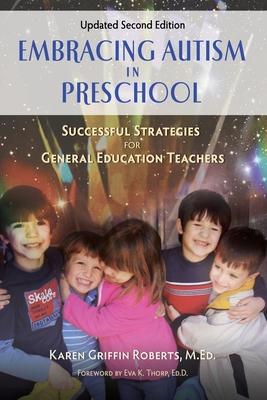Embracing Autism in Preschool, Successful Strategies for General Education Teachers, Second Edition, includes the latest autism diagnostic guidelines with implications for student placement and is invaluable for preschool teachers, special educators, speech/language clinicians and parents. This updated bestseller supports preschool teachers wishing to meet the needs of each child in their care while including children with autism. Research-based strategies include teacher-tested ideas that support every young child's learning. These strategies and sample activities in the text and appendices are easy to read and provide a much needed resource for early childhood educators. Embracing Autism underscores social interaction as the foundation for the development and use of language in natural settings. There is a chapter on the use of play for developmental purposes. These interactions are crucial for further development of socialization, which is such a challenge for children on the autism spectrum. Embracing Autism has the potential to change for the better the way community preschools everywhere approach young children on the autism spectrum. This book's practicality and resources make it possible to truly feel, in Karen's words, that "it is a privilege to have a child with autism in your class."

Embracing Autism in Preschool, Updated Second Edition: Successful Strategies for General Education Teachers
Embracing Autism in Preschool, Successful Strategies for General Education Teachers, Second Edition, includes the latest autism diagnostic guidelines with implications for student placement and is invaluable for preschool teachers, special educators, speech/language clinicians and parents. This updated bestseller supports preschool teachers wishing to meet the needs of each child in their care while including children with autism. Research-based strategies include teacher-tested ideas that support every young child's learning. These strategies and sample activities in the text and appendices are easy to read and provide a much needed resource for early childhood educators. Embracing Autism underscores social interaction as the foundation for the development and use of language in natural settings. There is a chapter on the use of play for developmental purposes. These interactions are crucial for further development of socialization, which is such a challenge for children on the autism spectrum. Embracing Autism has the potential to change for the better the way community preschools everywhere approach young children on the autism spectrum. This book's practicality and resources make it possible to truly feel, in Karen's words, that "it is a privilege to have a child with autism in your class."